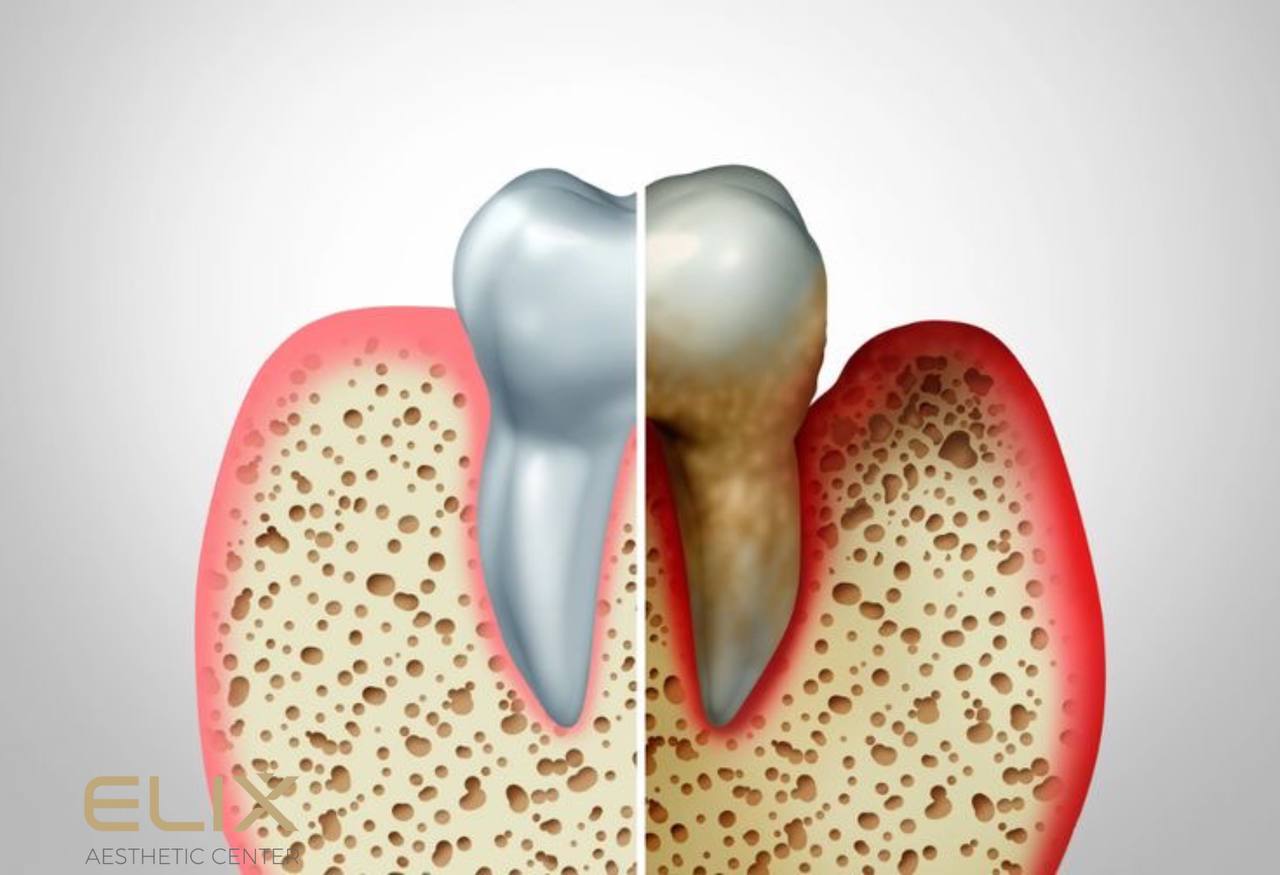
Treatment of Periodontitis in Armenia
In the case of an exacerbation of periodontitis, with the formation of purulent inflammation, gingivectomy (removal of the gums) is required. This manipulation is performed under infiltration or block anesthesia (an antiseptic injection into the soft tissues or its injection near a major nerve).
Conservative Therapy:
- Rinsing the mouth with antiseptics
- Medicinal treatment of the gums
- Introducing proteolytic enzymes into the periodontal pockets
After the acute inflammation has been resolved, necessary procedures and approaches include:
- Developing individualized recommendations for oral hygiene
- Ultrasonic teeth cleaning
- Removal of orthopedic structures that damage the surrounding soft tissues of the teeth
- Decay treatment
- Washing periodontal pockets with antiseptics and antibiotics
- Temporary fixation for teeth with mobility
- Removal of teeth that have lost their functional value
Periodontitis Surgeries
Surgical treatment for periodontitis includes two types of procedures: the removal of pockets and the correction of soft tissues. If the pocket depth is up to 4 mm, the dentist smooths the surface of the tooth using a bur and removes the contents of the pocket. This procedure is called curettage or scraping. Afterward, a blood clot forms to fill the pocket, and its edges are approximated and closed with a dressing for 2 days. If curettage can be done without direct visual control (closed method), the procedure is relatively simple and can be effective for shallow pockets. For pockets deeper than 5 mm, surgery is required, which involves working with bone defects. This type of surgery is called flap surgery. It is the primary method used for the treatment of moderate to severe periodontitis in dentistry.
During the surgery, the dentist makes an incision in the gum to expose the underlying bone and performs the necessary manipulations to clean the area and remove the infected tissue. The gum is then closed over the bone, helping to reduce bone atrophy, prevent the progression of the pathology, and reduce the mobility of the affected teeth.
In severe cases and when complications develop, other surgical procedures are also used:
Hemisection: This involves the removal of one half of a tooth along with its root. The resulting defect is filled with osteoplastic (bone-replacement) material. This surgery is typically performed on lower molars.
Transcoronal Separation: This procedure divides the tooth into two parts, effectively creating two separate teeth if there is sufficient bone structure for support. It is used on lower molars.
Root Resection (Amputation): Removal of one or two roots. This procedure is used in severe cases where endodontic (root canal) treatment is not possible. It is commonly performed on upper molars. Afterward, the lost bone tissue is replaced with osteoplastic materials. In such cases, orthopedic treatment is required to restore the missing tooth.
Tooth Extraction: Complete removal of the tooth. At Elix Clinic, this option is only used in extreme cases when no other treatments can preserve the patient's natural tooth. After extraction, an implant ("screw") can be immediately placed in the same socket. The implant serves as the root of the new tooth, and a crown is placed on top, effectively replacing the lost tooth with an artificial one.


